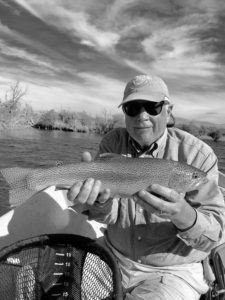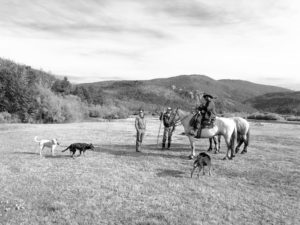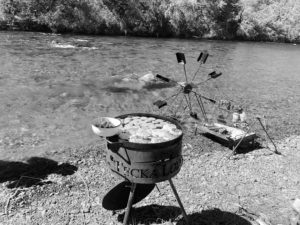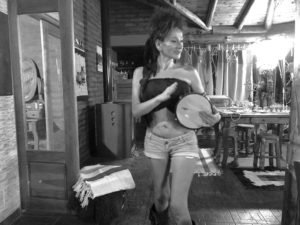There were two notable events in 1974 that might remind one of stuff that is happening today. Investigations of President Richard Nixon were proceeding, and 65-year old Arkansas Congressman Wilbur Mills, the famed porkmeister who some beltway insiders considered the most powerful man in Congress, was caught up in a sex scandal with a stripper (porn stars were harder to come by then) named Fanne Foxe, aka the Argentine Firecracker. When Mills was pulled over by police at 2AM on a crisp October night for erratic (or perhaps erotic) driving at the D.C. waterfront, Ms. Foxe, in an act of extraordinary courage and selflessness ran from his car and leapt into the Tidal Basin, in order to save him from the ignominy, which in those quaint and archaic times, would result from being caught with his pants down in the presence of a lady who shed her garments for money. Foxe, who would not have been mistaken for Esther Williams, had to be rescued by the police department’s elite frogman unit. She was justly rewarded for her act of heroism (or is it heroineism?) by being named to Time Magazine’s prestigious list of the world’s Ten Greatest Mistresses, along with her more renowned soulmates, Bathsheba, Anne Boleyn and Camilla, Duchess of Cornwall. Following her natatory episode, she continued to entertain the nation’s governing elite (including the smitten Mills) at a bar on 14th Street, after discreetly changing her pseudonym to The Tidal Basin Bombshell, in an effort to remain anonymous.
So, how does this tragic story of unfulfilled ecstasy between two star-crossed lovers relate to my traveling and fishing escapades? Well, after 1974, I fantasized about visiting a country so wonderful, as to have spawned a lady with the mesmerizing charm and talents of Fanne Foxe. When Evita arrived on Broadway in 1979, with its enchanting music, my fantasy grew. Then I discovered that Argentina was also a great place for fly fishing. I took my first fishing trip to Argentina in 1995 with my son, Tom, and have since have been back nearly every year, occasionally with friends but mostly by myself. I have travelled and fished for trout over a mountainous and sparsely populated area stretching for about 500 miles from Rio Pico in southern Patagonia to Aluminé in the north.
As I write this, it’s mid-April, and Old Man Winter, who barely showed up in Keswick when he was expected, has recently settled in and is refusing to leave. What happened to his lamb-like exit those nameless bards of yesteryear promised us by the end of March? Oh well, I’m recently back from two lovely weeks in Argentina where it was summer, so I have nothing to complain about. Except the damn weather! This year’s trip was a little different than past years, in recognition of my advancing years, and a connubial commitment that I will not wander, or even drive, by myself in remote areas without anyone knowing where I am. So, I hired a guide for five days in the Rio Pico area, then joined an organized group of a half-dozen other anglers, to fish for a week at a large estancia (ranch) near the Chilean border.
The vast majority of trout fishermen in Argentina are foreigners, mostly Americans. Typically, they spend a week or two with a guide who drives them to three or four different lodges and guides them while there. Rio Pico is an area that, until quite recently, got little attention from travelling anglers because there were few decent accommodations and access to the rivers was restricted because it was through private estancias. But, in the past decade, three lodges have opened and they have, in turn, worked out an arrangement with the private landowners to cross their properties to get to the rivers. By the time that I got around to planning my trip, the two more upscale lodges were already fully booked, and I ended up at the Las Lomas Lodge, which my Argentine guide, Federico, described as simple, but comfortable. He picked me up at the airport in Esquel, a small city nearly a thousand miles southwest of Buenos Aires, for the 3-hour drive to the Lodge. As we neared it, he warned me that the lady, Claudia, who ran it was of a “very particular” type. When I asked what that meant, he said “you will see soon enough.” On our arrival, Claudia emerged from the lodge to greet us clad in severely abbreviated cutoff jeans and a bikini top. She was older than her outfit implied. Her hair was piled on top of her head and it and the rest of her body were adorned with a variety of spangley enhancers. Fanne Foxe reincarnate. Looking for her Wilbur Mills? She offered us a beer, then joined us at a small table. I tried hard to focus on our conversation. She said that her parents had immigrated to Argentina from Egypt and Italy, respectively, but she was unclear about how she had ended up managing this remote mountain retreat. She added that she loved performing Turkish harem dances, accompanied by a tom-tom drum, that she played.
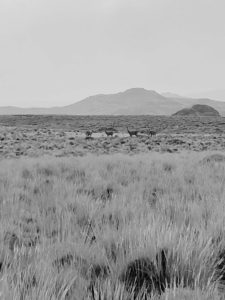
The guanacos – a camelid native to South America. Their name comes from the South American Quechua word huanaco. Young guanacos are called chulengos.
The first morning we left for the Las Pampas River, a tributary of the Rio Pico, right after breakfast. Much of the road was really just a trail. We drove across five or six streams ranging from 10 to 40 feet wide, passed through about 10 gates, each of which had to be opened and closed, and ultimately drove along a stream bed and the river bank for a while. The rough trip was probably about five miles and took over an hour. The good news is that we had the lovely river to ourselves. The bad news is that the famous Patagonian wind blew hard all day, making both casting and fish sighting a challenge. I caught only a few decent fish, but thoroughly enjoyed myself, as I do on any bright day when I’m fishing a new river, surrounded by beautiful scenery. The remaining days I fished the Rio Pico, and a small lake, with the same experience as to roads, wind, solitude and scenery, but with more fishing success.
The only other person staying at the lodge was Guido, a Belgian angler who had fished for trout around the world and was finishing up his annual month-long trip to Argentina. Surprisingly, the prior week he had stayed in cabins owned by very close friends of mine in a village about 400 miles north of Rio Pico. Small world. On the last night of our stay, after dinner, Guido and I were celebrating our fishing by polishing off our second bottle of wine, when we heard a subtle, exotic drum beat and looked over to see an apparition enter the room enshrouded head to toe in a green sateen cape-like garment. As the drumbeat quickened, the garment dropped, and Claudia emerged in a costume that looked like something that would be worn by the attendants in Caligula’s bath, or by Miley Cyrus in a twerking contest. After undulating to the frenetic drumbeat of several songs from the Great American Pole-dancing Songbook, Claudia slithered out of the room as subtly as she had entered, not to be seen again, despite the intense clapping and vocal encouragement from Guido and me for a well-deserved curtain call.
The next morning at breakfast, Claudia served us pleasantly and professionally, with no acknowledgement of the prior evening’s entertainment, leaving me to wonder, as did Yeats, “How can we know the dancer from the dance.” After breakfast, we said our goodbyes and I left with Federico for a two-hour drive to a lodge on the Estancia Tecka – one of the largest ranches in Argentina – comprising about 450,000 acres. To give an idea of Tecka’s immense size, there are two lodges on the property, and it takes nearly an hour to drive between them. The Estancia is a working ranch, raising cattle and sheep (for wool), and has private control of over 30 miles each of two beautiful and superb trout streams – the Tecka, a spring creek about 20-30 feet wide, and the Corcovado, a large river that is floated. There are also two small lakes and a few brooks that can provide good fishing in the early season when they have sufficient water. At Tecka, I was joining a group of seven anglers who frequently travel together to fish. I am always happy to fish alone, but when I am traveling I enjoy the conviviality of a group at breakfast and, particularly, dinner. So, I was looking forward to a week at Tecka.
I arrived about noon, several hours before the rest of the group, and Federico took me for a float on the Corcovado. The wind was blowing a gale upstream, forming large whitecaps. As a result, he could not row downstream, despite the River’s strong current, and for the first time in my life I was in a wind-borne rowboat traveling upstream. Also, I had to cast upstream because of the wind. The fly, being flat on the water, was not much affected by the wind, so after landing it floated downstream, and toward me – a most unusual experience. Controlling the boat was very difficult for the guide, and after about an hour with no fish, and several nasty wind-knots in my line that required attention, I mercifully suggested that we return to the Lodge for a drink. For the next six days the wind blew hard continually, but never like that first day.
The next morning, I again went with my guide to fish the Corcovado. On the way, a flock of six rheas ran ahead of our vehicle for several hundred yards. The rhea is the Patagonian version of the ostrich, about two feet shorter and less bulky than its African cousin, but impressive nonetheless. And very fast. A few minutes later, a group of guanacos appeared on a ridge near the road. The guanaco is one of the four camelids native to South America, the others being llamas, alpacas and vicunas. Rheas and guanacos were common sights on the Estancia. They live in relative safety, as the only large predator in Patagonia is the puma (mountain lion), which is rare and reclusive. I have never seen one, nor have most of the Argentines who I have met when fishing.
When we arrived at the boat, I was surprised to see it occupied by a mink, that scurried into the water when it saw us. The mink is not a native animal. About 15 years ago a local entrepreneur decided to farm them, and he imported several thousand animals from North America. There was an accident, and the mink escaped into the local environment. Though their population hasn’t exploded as much as feared, they are occasionally seen along the rivers in the Estancia. The only native animal living along the river banks is the coypu, which we call a “nutria.” This animal looks like a small beaver with a rat’s tail, or perhaps like a giant rat, typically weighing 15-20 pounds. It was imported into North America by fur farmers. Some escaped into the wild, proliferated, and are now considered a nuisance as their appetites for plants are voracious, and they destroy them by eating their stems and roots. I have seen them a few times along the river banks in both Patagonia and the U.S., but more often have been startled by the sound of a huge splash as they slide into the water, which I invariably imagine to be a monster fish until reality returns.
Despite the relentless wind, the fishing was fine. In four days on the Corcovado I caught about a dozen nice fish a day from 16-22”. The Tecka was more challenging, yielding perhaps half of that number. Surprisingly, there are bigger fish in the Tecka than the Corcovado. I saw a few that were at least 24” and one guest caught one that was 28”. About 75% of the fish were rainbow trout, with the others being brown trout. The breakfasts and dinners at the Lodge were excellent, as were the lunches on the rivers. Argentina is known for its fine beef, but we mostly had other meats and the superb local sausage, accompanied by excellent red wines. Malbec continues to be the most popular grape in Argentina, but cabernet franc, merlot, pinot noir and cabernet sauvignon are also grown, and produce excellent wines. Even good white wines – torrontes, sauvignon blancs and chardonnays – are available. And the variety and quality of beer has improved considerably over the past two decades.
A highlight of any fishing week in Argentina is the asado, or barbecue. Often prepared by gauchos – the traditional cowboys who live and work on the estancias. At Las Lomas, a baby goat was splayed and slow-cooked over an open fire. It was incredible – both flavorful and tender – the best goat by far that I have ever eaten. At Tecka, we all met for an asado at lunch along the river. There were sausages, vegetables and a filet cooked on a spit. But the amazing thing, is that the spit was turned by hydraulic power. A water wheel sat in the river, turned slowly by the current, and the spindle protruding from the wheel held and rotated the filet over a flame. A Rube Goldberg contraption that produced a memorable meal. Argentina is a lovely country, full of surprises, and the people are warm and welcoming. Don’t take my word for it. Just ask Wilbur Mills.



